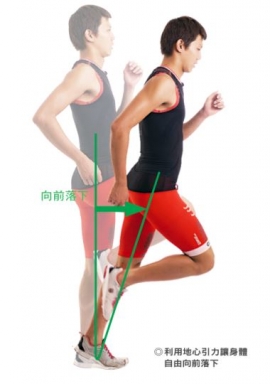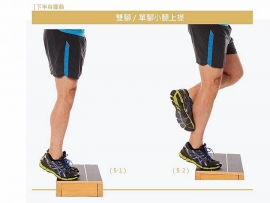
LSD(Long Slow Distance)耐力训练的文章,网路上很多,山姆伯伯不再提啰。直接来看Wiki中Long slow distance的"The running boom“的描述:
Starting out with an hour run three times a week and building up to weekly averages of 40 to 60 miles a week for the last three months, thousands of graduates of the program have found that they could complete the fullHonolulu Marathonwhich is held every year in beginning of December. The clinic’s approach can be seen from its original Rules of the Road:
(从每周跑3次×每次跑1小时开始,到了比赛的最后三个月,累积到每周平均跑40至60哩(64至96公里)的能力,完成以下训练内容的人,可以完成美国夏威夷州檀香山马拉松的全马比赛。)
■ No fewer than three runs per week (一星期至少跑3次)
■ No more than five runs per week (一星期跑步不超过5次)
■ No less than one hour per run (每次跑不低于1小时)
■ No farther than 15 miles on any run (每次跑不超过15哩,大概24公里)
■ One run per week lasting two hours or more (after month 5) (5个月后,每星期跑一次至少2小时以上的)
但对于开始跑步的人,一次跑超过1小时,可能不是一件简单的事,脚的耐力可能撑不住,所以时间是要慢慢加上去的。就像你每天坐在家,不运动,突然叫你走路走1个小时或2个小时,你的脚也是会撑不住的,更何况是慢跑呢?所以时间与距离是慢慢加上去的。
而LSD耐力训练一次至少要跑“2”小时,现在知道来源了。现在是为什么这种长跑耐力训练,会训练到快缩肌呢?但什么是慢缩肌及快缩肌呢?先来看“肌力与体能训练”这本书说的:
第17页 肌纤维的类型
骨骼肌是由具有不同形态及生理特性之纤维所构成,根据各种不同标准,这些差异被区分成不同种类系统。其中让人耳熟能详的是根据牵搦时间来区分肌纤维,分成慢缩(Slow-Twitch)与快缩(Fast-Twitch)纤维。由于一个运动单位包含相同类型的肌纤维,此一分法亦适用于运动单位。快缩运动单位可以快速的产生力量及放松,在短时间内完成牵搦,容易疲劳,低有氧动力,能够快速产生力量及高无氧动力。相反的,慢缩肌以较慢速度产生力量及放松,具有较长的牵搦时间,能忍受疲累及提供较多有氧能量。
第18页运动时运动单位之徵召形式
运动单位被徵召的形式是由该运动项目的生理特性所决定。如长跑,必须具有耐力及不易疲劳的特性,慢缩肌参与其事。假如需要多余的力量,如比赛终点的冲刺,快缩肌将被徵召,以增快步伐;不幸的是,如此强度的运动无法持续太久。假如该活动需要近乎最大力量的表现,如瞬发上博(Power Clean),必须徵召快缩肌,才能有所助益。
一般的观念都是认为耐力训练只会训练到慢缩肌,但研究说明会训练到快缩肌啰。山姆伯伯在Google Books上查到“Run Fast: How to Beat Your Best Time”这本书的内容,如下:
SLOW DOWN TO SPEED UP
SPEED TRAINING WITHOUT SPEEDWORKLater, Peter Snell, Ph.D. – currently a research scientist in the cardiology department at the University of Texas South-western Medical Center at Dalls – came to understand the scientific principles that permitted him to use slow running to train his predominantly fast-twitch muscles.
In 1974, Dr. Gollnick collaborated on a study with Bengt Saltin, Ph. D., one of Sweden’s top exercise physiologists. Dr. Gollnick and Dr. Saltin studied a group of cyclists in their laboratories.They took muscle biopsies of the cyclists as they exercised and discovered that after 60 or 90 minutes, most of the glycogen stored in the cyclists’s slow-twitch muscle had become depleted.
Slow-twitch muscle are used most often in aerobic endurance activities; fast-twitch muscles are used more for anaerobic speed activities.With glycogen depleted from the slow-twitch muscles, the cyclists’s bodies began to recruit the fast-twitch muscles for their supplies of additional glycogen.As a result, Dr. Gollnick and Dr. Saltin discovered, the body “trained" these fast-twitch muscles.
“As your body begins to recruit your fast-twitch muscles for additional glycogen, you speed up, giving those muscle on extra training boost.“
有氧耐力的运动中大部份都是使用慢缩肌,当慢缩肌的肝醣用完,身体会开始徵召快缩肌。上面有提到Snell,而国峰教练有跟山姆伯伯介绍:
Snell的教练Lydiard Arthur是世界上非常知名的跑步教练,关于跑步的速度要先从有氧耐力打底开始,就是Lydiard首先提出的。
国峰教练也有写一篇“面对一群年轻选手的阅读与思考--分享传奇教练Arthur Lydird对于年轻选手的训练原则”,之前山姆伯伯在FB也有分享过,有带年轻选手的教练可以看看啰。
从上面的文献中,暂时得到这二个结果:
□ LSD训练至少要跑2小时。
□ 当慢缩肌的肝醣用完,就会开始动用到快缩肌。
所以还是没找到“两个小时以上的LSD跑步可以训练到快缩肌(Fast-Twitch Muscle Fiber)”的直接文献,山姆伯伯会再找找看啰。



